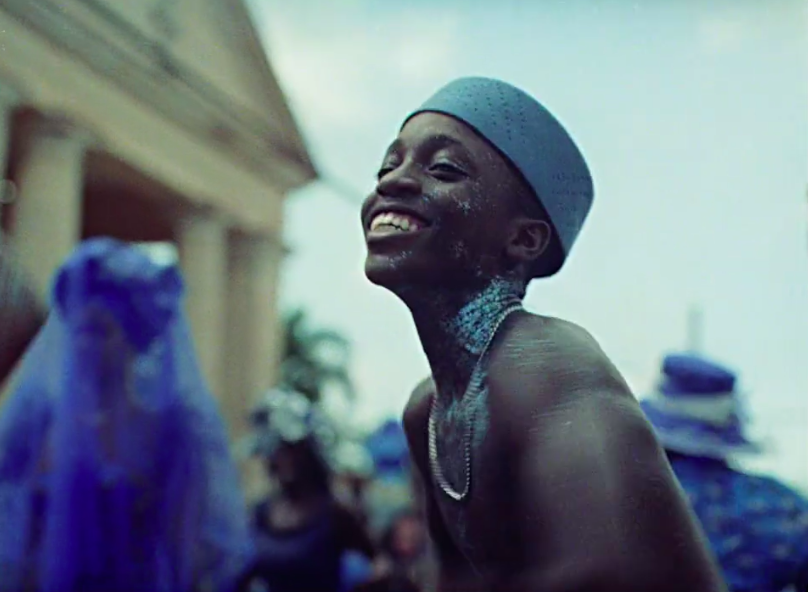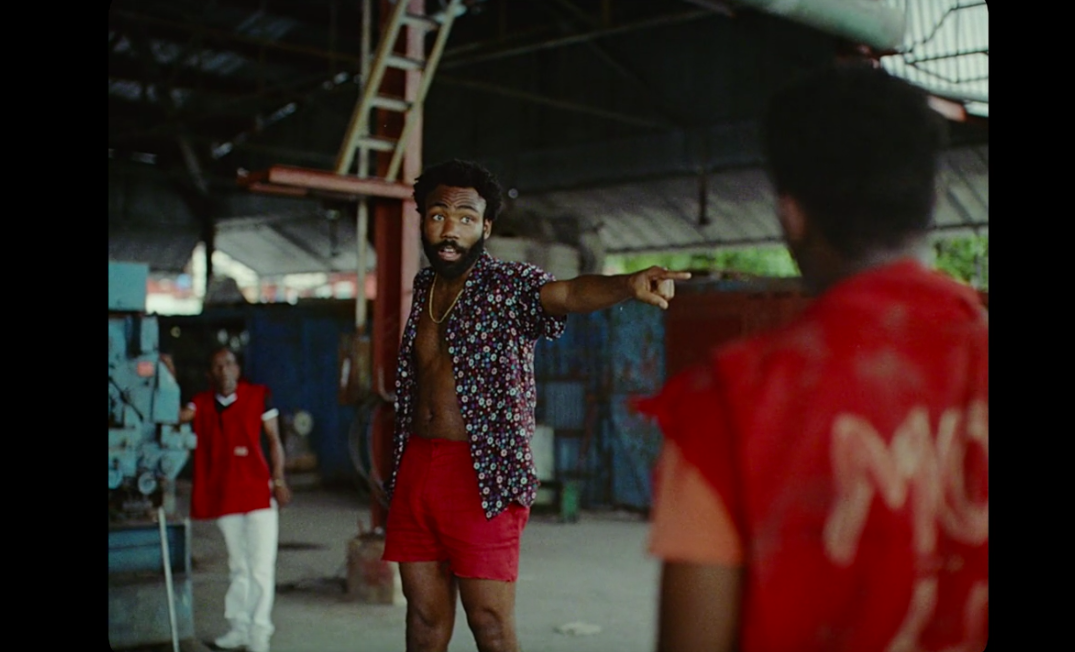In Donald Glover’s new film Guava Island, he takes viewers on a journey to Cuba that reveals music's power to influence social change. With Rihanna co-starring as his girlfriend Kofi Novia, Donald Glover plays Deni Maroon, a beloved local musician who gives people a sense that they’re worth more than the hard labor jobs their government pushes. Guava Island is a fictional place "in the very center of the world," we’re told, but borrowing Cuba’s backdrop, as well as key scenes featuring traditional afro-Cuban drumming, allows Cuba’s own history with artistic repression to ground Glover’s parallel story.
Deni’s music helps the Black people of the island feel in touch with their freedom and ancestral spirituality—so much so that the local government sees him as a threat to their oppressive labor system and they hunt him down. In Cuba, enslaved Africans brought to the country and forced to convert to Catholicism developed what eventually became Santeria, which preserves Yoruba traditions through music and storytelling. Santeria's enduring importance is a testament to the people’s will. Guava Island’s more generalized story doesn’t spell this connection out explicitly in the film, but it weaves subtle references to Santeria throughout.
One of the most interesting ways Guava Island nods to Santeria's influence is through color. Orishas (deities) are often identified by colors they’re associated with, like when Beyoncé channeled Oshun’s flowing yellow dress to fuck up some fire hydrants in the “Hold Up” video from Lemonade. On Guava Island, viewers are overwhelmed by the colors blue and red, which in the opening animation seem to simply symbolize love and war, but have more layered meanings in afro-Cuban culture.

Blue is strongly associated with the orisha Yemaya (Yemoja in Yoruba), goddess of the oceans. Yemaya has an all-knowing maternal power that represents the cycle of life and natural order. Throughout the movie, villagers who feel inspired by Deni’s message are decked out in various shades of blue that director Hiro Murai draws attention to. It seems to symbolize a certain lust for life and Black dignity, most pointedly when factory workers in blue stop sewing to dance along with Deni’s music—or when the town dresses in blue to dance in the streets at his funeral procession.
But the most Yemaya moment in the film comes at the end when Rihanna’s character Kofi dons a matronly blue veil at Deni’s funeral. She gracefully tells the leader of the island, Red Cargo, that Deni's death hasn’t killed his influence on the people. (Cargo originally didn’t want Deni’s performance to distract workers from their jobs, but the factories stayed completely empty on the day of his funeral procession, much to Cargo’s dismay as he watched in disbelief.) Kofi closes by saying “We got our day,” pointing out the natural cycle of life, which Yemaya knows all about. And as the movie closes on a birds’ eye view of the seemingly endless blue procession following after Kofi, it evokes a river or stream of life. It’s a reminder that Yemaya’s children are everywhere and can never be stomped out, just moments before we’re reminded that Kofi is pregnant with Deni’s child.

Deni, by contrast, is associated with red throughout the movie, from the first glimpse of him in a (very hot) scarlet head wrap to his spontaneous medley performance with red-suited backup dancers. On the surface, with red symbolizing war and anti-capitalism, he certainly has a revolutionary’s mindset. But his open shirt with red shorts is also similar to what the orisha Sango (aka Shango, Chango or Xango) wears. In oral histories, Sango is a king who loves to play drums and flirt with the ladies. He has a certain male virility (which Glover really leaned into with all those hip thrusts) and strong leadership skills—and he too became more sacred after his death. Elegua (Eleggua), god of crossroads, is the other prominent orisha that sometimes appears shirtless with red pants, which is interesting too; Deni is an agitating force that brings underlying tensions to a breaking point, opening doors to a new chapter.
The movie doesn’t make the case that Deni and Kofi are specifically supposed to be representing the orishas, but it positions them as the leads of their own modern-day spiritual folktale that carries Black culture forward. Their folktale contains remnants of the long traditions before theirs, but the movie leaves small indicators for people to recognize how those traditions inform the story. That "if you know, you know" vibe actually mirrors the way that Santeria has functioned throughout history: Believers are aware of the ways their tradition—whether explicitly acknowledged or not by the broader society—affects events and controls patterns of justice in our world.
Sign up for our newsletter to get the best of VICE delivered to your inbox daily.
Follow Taylor Hosking on Twitter and Instagram.
from VICE http://bit.ly/2Gu4dIZ
via cheap web hosting
No comments:
Post a Comment